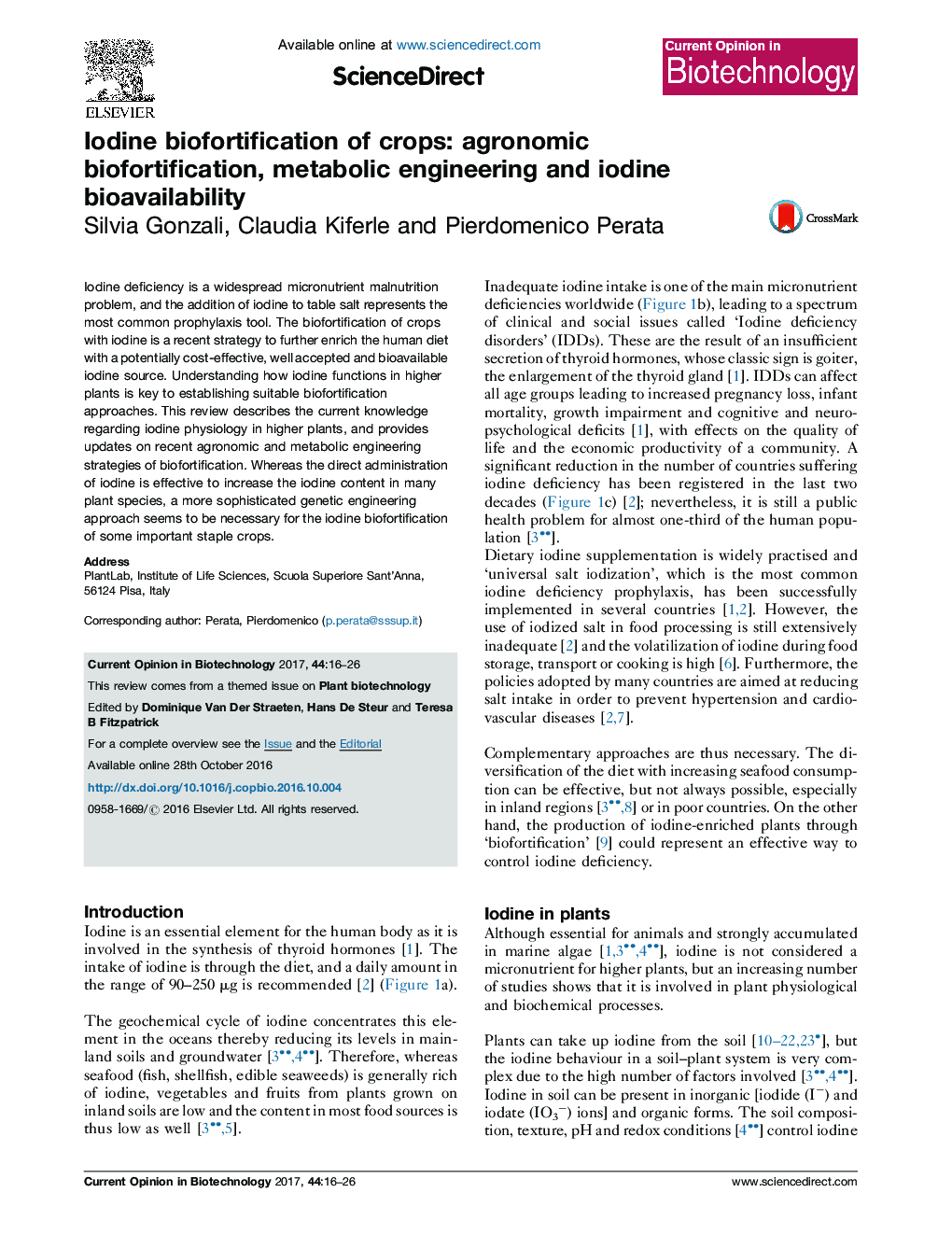| Article ID | Journal | Published Year | Pages | File Type |
|---|---|---|---|---|
| 6451566 | Current Opinion in Biotechnology | 2017 | 11 Pages |
â¢Iodine has been recently proposed to be involved in various processes in plants.â¢Iodine soil applications are more effective than foliar sprays for plant absorption.â¢Plant breeding for traits controlling iodine content is still at the beginning.â¢Genetic engineering is a possible strategy for plant iodine biofortification.â¢Iodine in plant food is bioavailable and cooking methods are able to preserve it.
Iodine deficiency is a widespread micronutrient malnutrition problem, and the addition of iodine to table salt represents the most common prophylaxis tool. The biofortification of crops with iodine is a recent strategy to further enrich the human diet with a potentially cost-effective, well accepted and bioavailable iodine source. Understanding how iodine functions in higher plants is key to establishing suitable biofortification approaches. This review describes the current knowledge regarding iodine physiology in higher plants, and provides updates on recent agronomic and metabolic engineering strategies of biofortification. Whereas the direct administration of iodine is effective to increase the iodine content in many plant species, a more sophisticated genetic engineering approach seems to be necessary for the iodine biofortification of some important staple crops.
Graphical abstractDownload high-res image (147KB)Download full-size image
